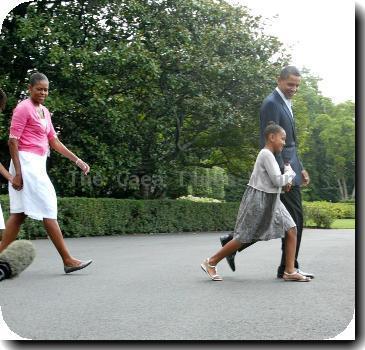17 years, 5 colleges, 3 states _ in one student’s story, lessons on the path through college
By Justin Pope, APFriday, December 11, 2009
For 1 student, a long path to college degree
DURHAM, N.C. — She looked like a good bet to beat the odds, but her first try at college, nearly 20 years ago, came up short.
From a tough, low-income neighborhood of Utica, N.Y., Catherine McNamara earned a scholarship to Northeastern University in Boston, but soon returned home. Her second attempt, at a nearby community college, ended when a car accident knocked her husband out of work.
Since then: two kids, scattered jobs, a move south. Life.
But on Saturday, McNamara will cross the stage at North Carolina Central University to collect her bachelor’s degree in pharmaceutical sciences — with a 3.98 GPA. Her path took her to five institutions in three states over 17 years and she earned a scholarship here in 2007.
An education, she said this week, “is the one thing you’ve earned for yourself absolutely nobody can take away from you.” She expects to be bawling as her family watches commencement.
There’s no such thing as a typical college student these days. Nearly a third of undergraduate college students are 25 or older. About 70 percent have at least one characteristic that makes them “non-traditional” to government statisticians, such as part-time enrollment, caring for dependents, or working full-time while enrolled.
Supposedly, the “traditional” college student is 18 to 24, attending one institution full-time for four years. But that ideal has been steadily sliding toward mythology for decades. A majority of students who finish a bachelor’s degree attend multiple institutions along the way. Among older students, nearly half take eight years or longer.
What’s unusual about McNamara isn’t her winding journey, it’s her ultimate success. No country gives students more second chances to enroll in college than the United States. But where it falls short is helping non-traditional students complete a credential.
“When you look at who succeeds in college,” said Kati Haycock, president of The Education Trust, a Washington, D.C.-based non-profit, “you realize that any departure from the traditional path … has huge consequences to the likelihood of students succeeding.”
Last week, Haycock’s group, working with a giant consortium of state university systems, released some of the most comprehensive data ever collected tracking individual students along their often peripatetic paths through higher education.
Like many older students, McNamara’s route included community colleges. In other surveys, roughly 80 percent of community college students say they hope eventually to finish a bachelor’s degree. But the Education Trust data estimated under 10 percent succeed within 10 years.
Some explanations lie in public policy — the smaller resources for students serving low-income students, and the incentives to enroll students but not to graduate or help them successfully transfer.
Institutions, meanwhile, complain many students need so much remedial help that they’re out of financial aid by the time they’re ready for college-level work. True, though Haycock and other experts believe the way many community colleges teach remedial work is deeply flawed.
The hardest problems, however, lie in the complicated lives of non-traditional students themselves. This week, the group Public Agenda and the Bill and Melinda Gates Foundation released a survey of people age 22 to 30 who had dropped out of college. Balancing work and school was by far the hardest challenge, said the respondents, who clamored for more services like day care, nighttime classes, and financial aid for part-time students.
How McNamara beat the odds reveals a lot about her determination.
Her father, Michael Meier, credits her curious mind and toughness that first showed up in Utica, when she walked two miles to music lessons when her school stopped offering them. A talented oboist, she earned a spot in a statewide orchestra.
“She just needed a chance, but so many people, her being from an inner city, they didn’t want to give her a chance,” said Meier. “Well, kudos to North Carolina Central for giving her a chance.”
Determination helped her get through organic chemistry a dozen years after she’d last taken the subject, and the hardest challenge of all: returning home from science labs after bedtime for her daughter, who was too young to understand why mom was rarely around.
But McNamara’s story also says something about why so many others fail. She didn’t just have curiosity and drive — she had help.
Her mother, father and sister followed her to North Carolina and helped care for her children — Nicholas, now 14, and Aislinn, 7.
She also had a mentor, NC Central faculty member Emmanuel Mba, who noticed her in a course at a local community college and steered her to a state-funded program to train biotechnology workers. That enabled her to enroll full-time at Central.
A federal Pell Grant helped as well.
McNamara would have loved to play in Central’s vaunted marching band, but such traditional pleasures of college life weren’t possible. Breaking into student networks was hard. Still, around half of Central’s students now fit the “non-traditional” mold and she found some close friends, who along with administrators helped her navigate obstacles.
President Barack Obama wants every adult to have some higher education credential by 2020. The challenges that even a driven student like McNamara faced suggest the hardest part will be getting non-traditional students who lack McNamara’s support structures what they need to succeed.
McNamara is now looking for work in the pharmaceutical industry. Mba, recalling how much she helped other students, hopes her long educational journey isn’t over yet.
“I’m still trying to get her to continue, go get a Ph.D,” he said. “She’s going to make an excellent professor.”
Tags: Adult Education, Barack Obama, Durham, Education, Education Costs, Higher Education, New York, North America, North Carolina, United States, Utica



